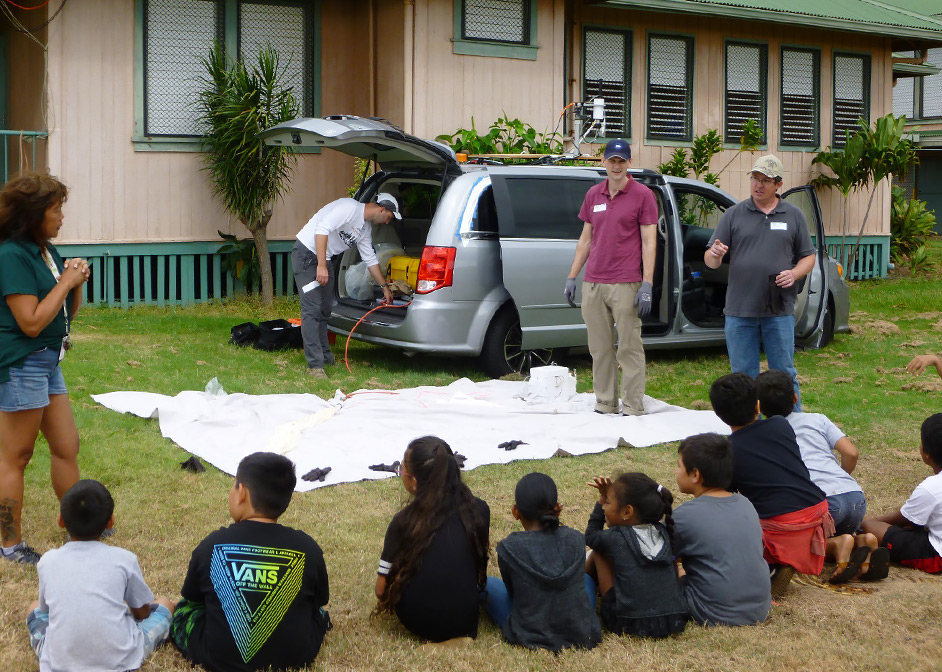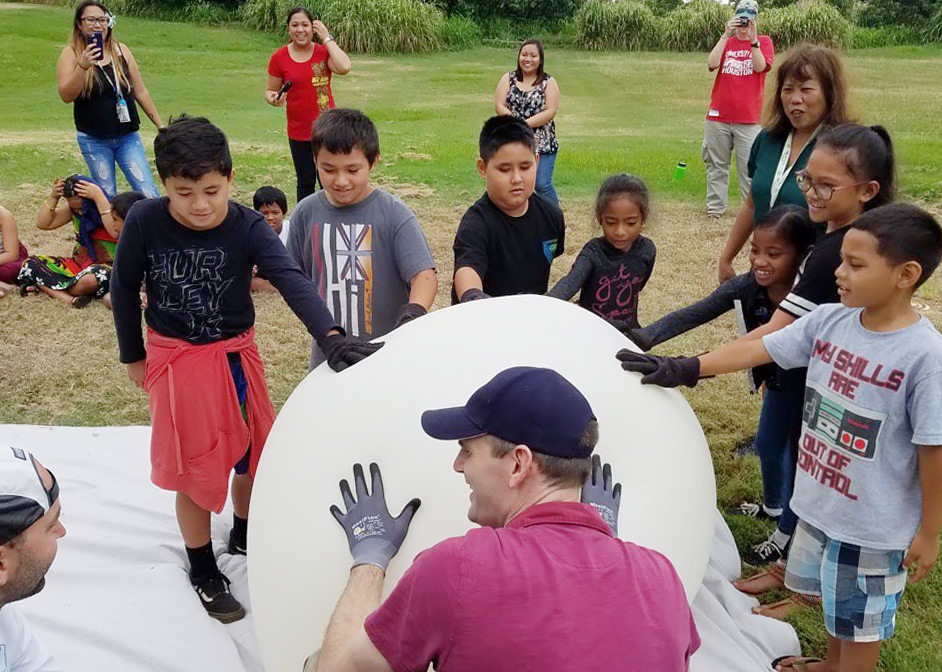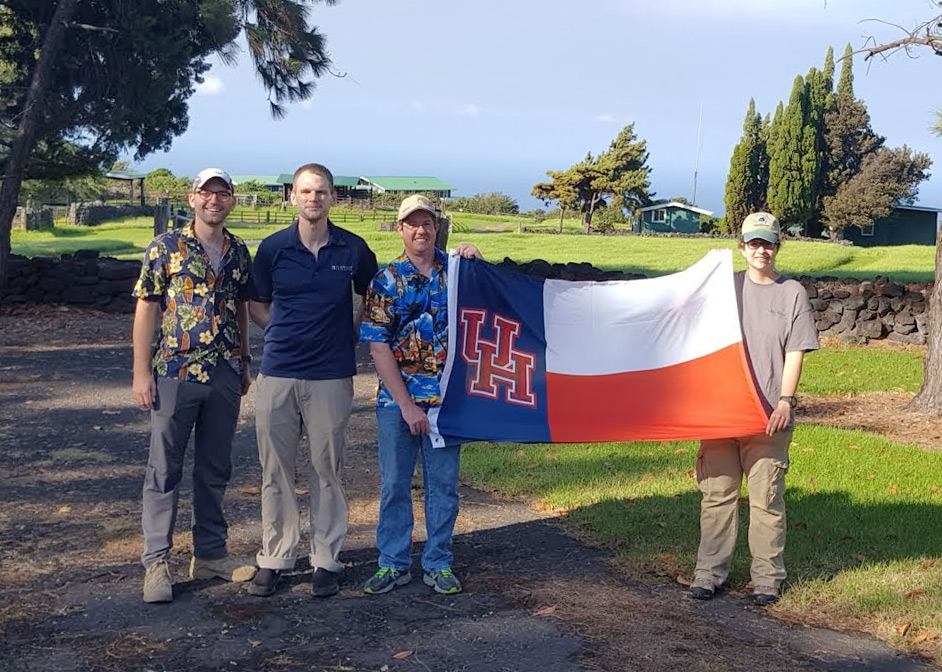Kilauea Begins New Eruptive Phase

On May 3, Kilauea, a volcano on the Big Island of Hawaii, began a new eruptive phase resulting in fissures near Pahoa in the lower East Rift Zone. Volcanoes and their fissures naturally emit sulfur dioxide (SO2), a colorless pungent gas that can be harmful to those with respiratory conditions. SO2 also forms acid rain that damages agricultural crops and livestock. In the stratosphere, sulfate aerosols formed by SO2 have a cooling effect on the climate.
NASA-Funded Rapid Response to Kilauea Eruption Event
The University of Houston and St. Edward’s University have been collaborating to develop a new balloon-based sonde to measure vertical profiles of SO2. This summer, from June 17-July 4, NASA funded a rapid response proposal led by UH to measure tropospheric SO2 plumes being emitted by Kilauea.
One of NASA’s interests in tropical volcanoes is the link to climate forcing, where large injections of SO2 into the atmosphere can cause cooling effects worldwide when converted to sulfate aerosols. To accurately predict the long-term planetary effects, it is crucial to rapidly deploy and measure the SO2 plumes coming from volcanic emissions.

In addition to field testing the new SO2 sonde, the rapid deployment to Hawaii tested how fast a team could be deployed by NASA to make high altitude SO2 measurements and set up observational sites following a major volcanic eruption. Lessons learned from this field test will be used to develop an action plan for future volcanic eruptions.
The field team consisted of research assistant professor James Flynn and first-year atmospheric science graduate student Elizabeth Klovenski (Yuxuan Wang, advisor) from UH’s Department of Earth & Atmospheric Sciences. Paul Walter, assistant professor of physics, and Mark Spychala, associate research scientist, at St. Edward’s University’s Department of Mathematics were also part of the team.
Together, the team assembled a mobile field laboratory to calibrate the SO2 sonde and mapped the distribution of SO2 along plume cross sections with in situ and remote-sensing measurements.
SO2 Sonde Launch at Naalehu Elementary
The seventh of nine SO2 sonde launches took place at Naalehu Elementary School on the children’s last day of summer school. Naalehu is roughly 80 km downwind of the fissures and has been significantly impacted by vog (volcanic gases and haze) from the fissures and ash from explosive events at the summit crater.
All 15 students participated in filling and launching the balloon. The children were excited to see the 7-foot diameter balloon sail away and watched with interest as the computer showed the live telemetry data.

The enthusiasm was electrifying, a day the kids and researchers will never forget. For many of the students, this was their first exposure to both NASA and scientists. In particular, several of the young girls were fascinated by seeing a female scientist.
Before the launch, the children learned about the atmosphere and how particulates and SO2 affect their health. The children came away with a new perspective that science can be fun and relatable and learned about different STEM careers.
In collaboration with school principal Darlene Javar, UH installed several remote-sensing instruments on the roof of the pre-school building. These instruments collect information on the optical properties of the aerosols in Naalehu, planetary boundary layer depth, and columns of gases such as SO2, O3, and BrO. The planetary boundary depth data is shared with the University of Hawaii–Manoa’s vog prediction team to improve forecasting for local communities and first responders. The remainder of the data is shared with the scientific community through the NASA Aeronet and Pandonia websites.
Additional remote sensing instruments were installed at NOAA’s Mauna Loa Observatory and at the Kamehameha School in Keaau.
- Elizabeth Klovenski, College of Natural Sciences and Mathematics